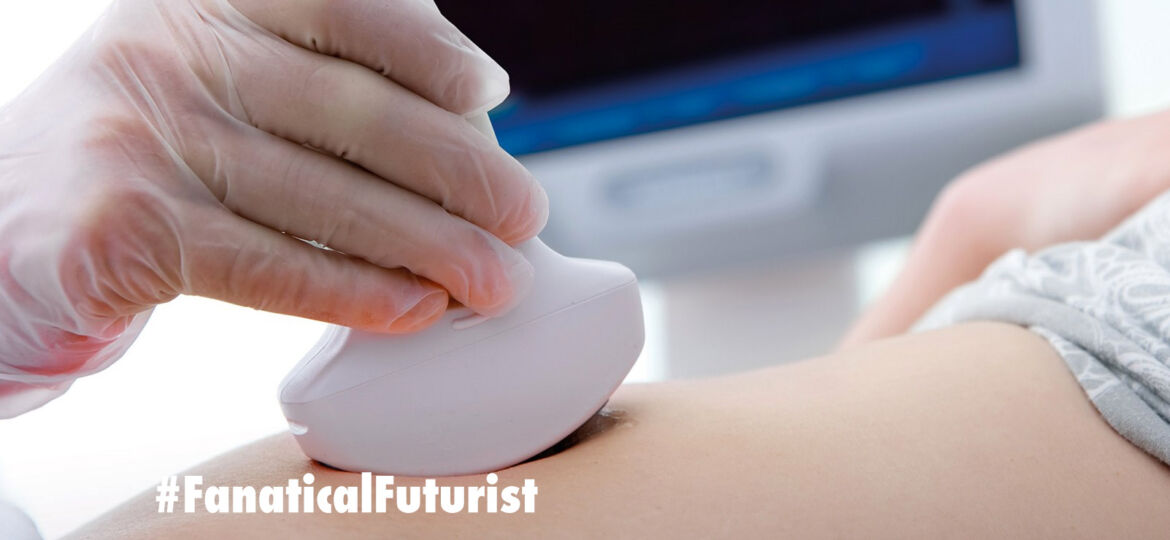
WHY THIS MATTERS IN BRIEF
Healthcare in many countries is expensive and difficult to access, tools like these help democratise access to vital services helping people live longer, healthier lives.
Engineer Jonathan Rothberg became famous for creating the world’s first DNA sequencer on a chip called the Ion Torrent back in 2011, after which he founded a start up called Butterfly Network who recently released the iQ, an Artificial Intelligence (AI) equipped device that lets consumers conduct ultrasounds with a smartphone, democratising yet another slice of healthcare, alongside other breakthroughs that help users identify skin cancer and other diseases using just a smartphone and their voice, or identify the onset of illness using just a smart watch, in the process.
The iQ is a “Lab on a Chip,” a medical imaging tool that make ultrasound scans accessible to anyone and everyone, and thanks to its design consumers don’t need to be a lab technician to operate one, it simply attaches to an iPhone’s lightning jack and its machine learning algorithms help the user find whatever it is they’re looking for.
The iQ is also revolutionising a 40 year old technology, almost all regular ultrasounds use compressed charged crystals or ceramics to send out a sound, pick up an echo, and then calculate the distance to and from an image, pretty much in the same way that bats navigate.
The iQ in action
In order to create the iQ Butterfly’s engineers replaced these crystals with something called Capacitive Micro-machine Ultrasound Transducers (CMUTs) which are rows of incredibly tiny drums that vibrate at a range of frequencies when a current is run through them. The team then combined these with algorithms originally designed for analysing data from thousands of telescopes.
To make the iQ’s final design as compact as possible the engineers bonded CMUTs directly onto a semiconductor layer, to do away with the wiring, to create layers that contained all the signal processors and amplifiers needed to convert the ultrasound into images.
Some people think getting an ultrasound is only for pregnant women, as it remains the most popular method of checking the health of unborn babies, so why bother with a pocket ultrasound, right? In reality though things are quite different. Aside from checking on foetuses ultrasound is also an effective imaging tool for examining organs in the body, hence Butterfly’s slogan, “Whole body imaging for under $2k.” Catchy.
Granted, the images it produces are not as clear as those from higher intensity imaging machines like a CT or MRI scan but nevertheless an ultrasound can be useful, especially if getting one doesn’t mean you have to travel to the local hospital anymore.
The iQ has also recently gained clearance from the US Food and Drug Administration (FDA) and can be used for diagnostic imaging for 13 clinical applications, which include heart scans for both adults and children, pregnancy exams, musculo-skeletal tests, and even for urinary tract checks.
While we may be accustomed to these kinds of procedures being relegated exclusively to the domain of doctors and technicians, Butterfly’s Chief Medical Officer John Martin argues that giving people the ability to perform an ultrasound with a smartphone is simply taking us one step further in our journey towards self-health monitoring.
“Thermometers once lived only inside hospitals. And blood pressure cuffs, and defibrillators,” he said, and he’s also a big fan of the technology which is no wonder given the fact he used it to spot a growing cancer mass in his own throat, which has since been removed.
For now the iQ can only be pre-ordered by licensed healthcare providers but soon Martin hopes it’ll be available to everyone to buy.
“The sooner we can put smart technologies in the hands of people at home, the sooner the right diagnosis can be made. I’ve yet to find a disease state where early detection didn’t lead to better outcomes. And I’m living proof of that,” Martin added.
















